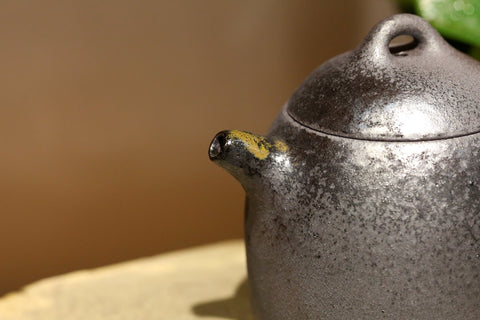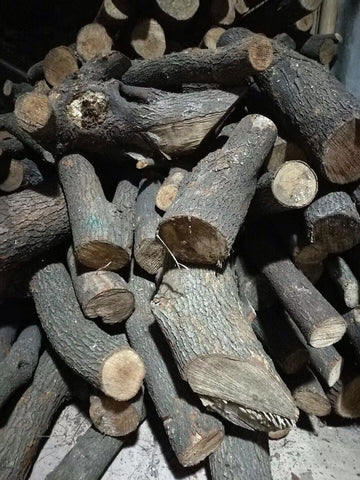Wood Kiln Yixing Teapots
(Originally published January 9, 2018)
Kilns using wood as fuel have become increasingly scarce in modern China. With the adoption of easier to use and less-costly electric kilns, very little teaware is still fired in traditional wood fuel kilns. While Yixing Teapots fired in electric kilns are beautiful, there is something special about wood-fired teaware, especially wood-fired teaware that is fully exposed to the fire and ash during the process.

Traditional and Modern
The Pine wood used as fuel turns to ash and falls onto the surface of the teapots during firing, melting and forming a glaze of various colors and patterns over parts of the surface. This is called “naturally occurring ash glaze.” The process results in different color patterns and a striking shine unlike that found on teapots fired in electric kilns.



Wood Kiln Firing Process
Unlike Yixing Teapots fired in electric kilns, which are typically fired for one day, wood fired Yixing teapots are fired in a lengthy process spanning almost a week:
1 day of firing in electric kiln
After the Yixing Teapots are shaped by the artist, they are placed in a modern electric kiln for the first phase of firing. This phase dries out the clay, removing all moisture. This initial phase requires precise conditions and temperatures to prevent any damage, cracking or structural weaknesses. Electric kilns provide more precise controls and are therefore used for the initial phase.
3 days and 4 nights firing in wood kiln
The teapots are removed from the electric kiln and then placed in a wood burning kiln. The kiln uses local pine trees for fuel. The kiln is fed pine tree logs, slowly bringing the temperature inside the kiln to 1200 degrees Celsius. The teapots are then fired for 84 hours (or 3 days and 4 nights) at this temperature. This process changes the composition and appearance of the teapots. Firing at this high temperature for this length of time removes organic compounds and other unwanted elements and produces a stronger surface. The interaction of the ash which falls on the teapots during firing produces beautiful patterns called “ash glaze”. When the teapots are removed from the kiln their patterns and colors are set, but they have a rough appearance on the surface.
1 more day of firing in electric kiln
Firing in an electric kiln for one additional day removes the roughness from the surface of the teapot, giving it a more finished appearance. The teapots are now finished and are ready to be used.

Pine wood is used as fuel for the kiln.

Yixing teapots are fired for 3 days and 4 nights in the wood kiln.

Pine wood fuels the kiln.
Using your Wood Kiln Yixing Teapot
All Yixing Teapots need to be prepared properly before use to remove unwanted dust acquired during firing. This is true of wood kiln Yixing Teapots as well as those fired in electric kilns. Teapots should be rinsed thoroughly in warm water 3 times and then rinsed at least 4 times with boiling water. We do not recommend boiling your pot as agitation will likely result in cracking and chipping! Once the teapot has cooled down, add tea, add water and enjoy.


